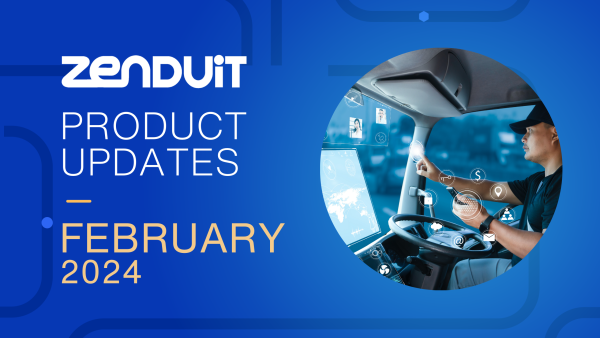Ultra-Wideband vs. Bluetooth Tracking: Which One Is Right For You?
October 27, 2021
Outdoors, Global Positioning Systems (GPS) are used to locate people, places and things, a process that is hindered once those objects move to an indoor space. When GPS tracking is not an option, real-time indoor location systems come into play; the most common being Bluetooth Low Energy (BLE) or Wi-Fi.
This was the case, until the popularity of Apple and Samsung smartphones inundated the market with Ultra-Wideband (UWB) sensor technology. While many people are familiar with both terms, they may not be sure how the two compare — or contrast — for that matter.
Both systems allow devices to determine each other’s location when in close proximity, which can be useful in a number of indoor location-based services, such as airports, corporate offices or shopping malls.
Many organizations have been using BLE to track assets for years, but with the ability to connect devices over short distances with unparalleled accuracy, UWB might be giving Bluetooth a run for its money; according to MarketsandMarkets, “Ultra-Wideband will be worth 2.7 billion by 2025, with a CAGR of 19.6%.” So what is ultra-wideband technology, and could it replace Bluetooth tracking in the near future?
UWB
Ultra-Wideband (also referred to as UWB or ultraband) is a wireless, short-range protocol that specifies how two devices use short-range radio waves to communicate at high speeds with each other. Typically, optimal communications are achieved when devices are within two to 10 meters (6.5 to 33 feet) of each other. If you can wirelessly transfer photos from your iPhone to another iPhone, or remotely print pictures from a digital camera, you’re already using a UWB-enabled device.
Ultra-Wideband is fast, secure and doesn’t use a lot of power to achieve big results. Being a low power system is a key factor for mobile devices in terms of battery life and practical usability. A sensor that sends a pulse once every second is expected to work for seven years off a single coin battery.
True to its name, it employs a wider frequency, and while UWB is short range, it doesn’t impact accuracy. Similarly to bats that use echolocation, UWB “pulses” can sense the distance between two transmitters; the shorter the impulse, the more accurate the measurement of distance is. By comparison, Bluetooth is accurate only up to 1 meter (39 inches) with no obstructions.
From secure wireless payments to smart car access, UWB is safe, accurate and reliable. There are a host of benefits and a wide range of use cases for Ultra-Wideband devices, including:
- Indoor Navigation – Get precise navigation to your gate in an airport, or to a product on a retail shelf.
- Smart Retail – provide useful information about a product or special offer.
- Asset Tracking – Using tags to track tools, equipment or building materials.
- Smart Home – Audio speakers, indoor lights and any connected devices with UWB sensing capabilities will be able to follow users from room to room.
- Wearable Health Sensors – UWB bracelets monitor body temperature, oxygen levels, and heart rate.
The disadvantages of Ultra-wideband
As much as UWB is catching fire in the world of technology, Bluetooth remains at the forefront of interaction with today’s portable devices. Even though Ultra-Wideband seems superior to Bluetooth positioning, there is no UWB infrastructure in place today; hardware companies have invested a lot of effort in BLE deployment so it’s likely that UWB deployment will happen overnight.
Furthermore, the new Bluetooth Low Energy 5.1 standard is coming, so UWB’s additional precision might not be that useful if Bluetooth Low Energy already provides improved accuracy, which would be sufficient for most applications. For applications where precision to a centimeter is needed, such as warehouse tracking, specialized hardware like Ultra-Wideband may be deployed.
Bluetooth
When we talk about Bluetooth, we’re describing a protocol that defines how two like devices use short-range radio waves to transmit data. Bluetooth was originally designed to continuously stream data applications and exchange data at a close range, making it ideal for consumer products such as headsets and laptops.
You use Bluetooth-enabled devices everyday, from smartphones to mice, headsets and printers. Two Bluetooth-enabled devices can communicate with each other from about 10 meters (33 feet) apart to about 100 meters (with additional equipment).
The disadvantages of Bluetooth
While Bluetooth can handle a lot of data, it quickly consumes a lot of energy and transmits data at a much slower rate than UWB. For these reasons, Bluetooth would not be ideal for transferring large audio or video files.
In addition, the range between Bluetooth-enabled devices is much shorter, so devices have to stay within a 100-meter range. With Bluetooth, you can’t measure distance or location, you can only detect whether or not a Bluetooth-enabled device such as a smartphone is within range of your device. Bluetooth signals are measured by weakness or strength based on proximity.
Finally, there have been numerous security issues surrounding the use of Bluetooth due to its use of radio frequencies. Bluetooth security includes authorization, authentication and optional encryption, yet despite all of these defense mechanisms, using Bluetooth might result in data loss. From “bluejacking” to “bluebugging”, there are a number of ways for people to access and exploit our personal, confidential information.
Which is better?
Both Bluetooth and UWB are inexpensive and relatively easy to implement. However, while Bluetooth and Ultra-wideband seem similar on the surface, there are some marked differences between the two technologies.
Infrastructure
Since 2013, the world has largely been built for Bluetooth. From consumer products to large-scale organizations, there has been far more infrastructure set in place to support this technology. Bluetooth-based solutions are also cheap and easy to integrate with any existing systems. All smartphones have Bluetooth technology, which is not yet the case for UWB.
Accuracy
Because Bluetooth operates on a frequency of 2.4GHz, its signals are regularly prone to interference, and workarounds can be costly and time-consuming. By comparison, Ultra-wideband provides higher accuracy by a few centimeters.
In contrast to Bluetooth, the distance measured isn’t based on signal strength, but rather on the time it takes a signal to travel from point A to point B. Compared to Bluetooth, the Ultra-wideband range is shorter. Because UWB operates at a higher frequency (3.1–10.6GHz) there is far less probability of any signal interference.
Conclusion
Ultimately, the indoor location solution you employ will depend on your business needs, budget and adaptability. At ZenduIT, we can help you get the right location technology for your organization. We work with large-scale building operators such as airports, shopping malls, hotels and corporate campuses to enable location-based services and analytics. We will analyze your needs and help you decide which technology makes sense for you. Contact us now for a free consultation.

